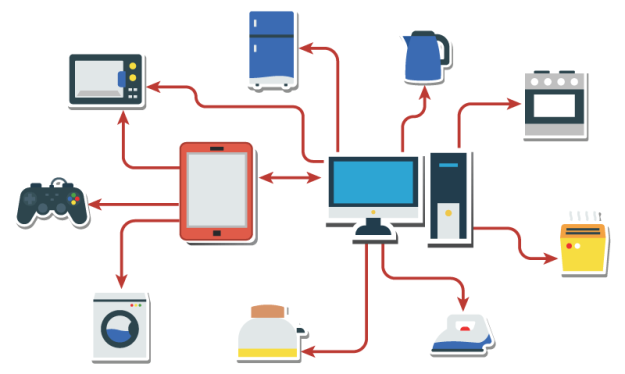
Have you ever wondered what email marketing will be like ten years from now? Will it still exist? What devices will people be using to read their email? We do wonder sometimes, and it can be fun to try and make some predictions about where the field is headed.
Predicting the future is always a tricky matter, and things you feel so sure about can turn out to be so wrong. A popular prediction in the fifties was that by 1970, we’d all be flying to work in our own personal airplanes, and in 1989’s Back to the Future II, predicted that in 2015, kids would be skateboarding on wheel-less hoverboards. Ten years ago, Runt of the Web made this prediction about the newly released iPhone:
“This stupid ‘iPhone’ that Apple is pedaling is never going to catch on…expect cellphones to just keep getting smaller and smaller until they reach the size of a postage stamp sometime around 2017.”
We’re not sure you could make this prediction anymore inaccurate if you tried.
In 1997, email was still a relatively new tool for most people. Back then, direct mail marketing and telemarketing were the most popular (and annoying) methods of pitching products. Email marketing was catching on, but so was its evil twin: spam. Any predictions in 1997 about where email marketing would be in 2007 undoubtedly would’ve been wrong. Between 1997 and 2007, the world of email marketing changed dramatically. HTML in email became more common, and spam got so bad that governments started passing legislation to prohibit the sending of excessive and unwanted email.
The next decade was far less eventful. By the early 2000s, the catchphrase that you should format your email “like it’s 1999” was catching on. Mailbox providers were loath to add the latest features to their email readers, fearing potential hacks and viruses. By 2007, nearly every email client restricted their email formatting capabilities to basic HTML, with no CSS options. Styles needed to be embedded within the content, and divs were out of the question; tables were preferred. During the past two years, we’ve started to see this policy loosen up, and some email apps, such as Apple’s Mail app, allow nearly every feature of HTML5, even when the individual iPhone client apps do not.
With all of this in mind, we’re going to make our own predictions about where email marketing is going, and what it might look like in 2027. Some of these predictions are already well on the way to coming true, while others are educated guesses.
Technological Convergence
Text messaging is a relatively new technology that has been quickly adopted and widely used by a broad spectrum of the population. Many of the messages that are sent via text messages could also be sent as emails, and if text messaging had not come around, email probably would have been the mechanism used. Will one of these technologies “win” and the other fade away? It doesn’t seem likely. Each of these seems to have developed its own niche. Text messages lack formatting options such fonts, tables, and colors; and a message is required to be short. Would text messages be more usable if you could send longer messages with formatted text and layout elements like HTML provides? Text messages are casual, often with spelling errors and the heavy use of abbreviations and acronyms, but that is the environment we’ve come to expect. Text messages are different enough from email messages to make them a useful tool for daily communication.
While technology could advance to allow text messages to share many of the features of email, it seems that would destroy its value, so we do not predict that will happen. In ten years people will still send short messages for nearly instantaneous communication, and will still expect little or no advertising via this method. Meanwhile, look for richer, more informative communications to come via email.
The Internet of Things
More of our modern devices can communicate with us in non-verbal ways. Refrigerators, thermostats, vacuums, cars, etc., all have information to push to us in ways that aren’t accomplished via simple screen displays. How will these devices push their messages in the future? Will it by via email, text messages, or some new technology that hasn’t been invented yet? Part of the challenge is the same one we face today. I would be okay with my car texting me that someone is attempting to break in, but I don’t want text messages that there is a carwash nearby offering a discount. So perhaps the Internet of Things will need to use both text messaging and email. Finding the dividing line between useful messages I want to receive from my refrigerator and annoying messages that irritate me will certainly still be an issue in ten years.
New Email Authentication Protocols
This is a safe guess. New methods of validating emails are suggested all the time. Most of these, most notably DMARC, are built on SPF and DKIM, the two current standards for email validation. We don’t see any changes in this, but we don’t think DMARC is the last word in authentication either. We can foresee new methods that would make issues such as phishing and spoofing in their current forms extinct. That’s not to say there won’t always be scammers, but anything that makes it harder on them is okay by us.
CSS Animations
Until recently, any animation in an email was limited to gifs. Now we’re starting to see some clever use of CSS animation, such as Eddie Lin’s spectacular CSS-only fireworks display that Litmus used in an email this year. Right now, their use is still a novelty, but as more email clients ease up on CSS restrictions, and folks like Justin Khoo at FreshInbox, and Anna Yeaman at StyleCampaign continue to push the envelope of what’s possible in email design, we’re bound to see more of these types of kinetic displays crop up in emails.
More Videos in Email
No big surprise here. Some email clients already allow it. Since it’s HTML5 only, it’s just a matter of time before videos become common in emails. As to how people will react to this remains to be seen, but as long as most marketers don’t start using autoplay on these them, everything should be okay. Autoplay is the wild card, nobody likes videos to start playing when they reach a web page, and they’ll hate it even more if it happens upon opening an email. How email clients react to this will depends on how their users react. It’s a double-edged sword. People like videos and respond well to them, but when poorly executed, there are few things more annoying (for more on this subject, see Using HTML5 in Email: Video).
Simpler Responsive Design Techniques
Let’s face it. Short of sending unformatted text, it is difficult to come up with a design that works as well on an iPhone as it does on a desktop monitor. That was the whole reason for responsive email design. But as we reported in our four-part series on the subject, responsive email design can be a pain the neck to implement. We can foresee a day when this won’t be such a hassle. When responsive set-ups will be so standardized that implementing will only take a couple additional properties or classes. We’re already starting to see this with CSS frameworks such as W3.CSS, Milligram, and Spectre, which don’t use any JavaScript. Expect more to come that will be specific to email. And while we’re on the topic of JavaScript…
HTML Scripting
JavaScript is a big no-no in email, and it’s easy to see why. As a programming language, it is not far removed from running an app. You’d never run an executable file that came attached to an email from someone you didn’t know (at least, we hope you wouldn’t), but opening an email that can run JavaScript is almost the same thing. Early on, some email clients tried offering JavaScript, but scam artists were quick to pounce on this.1
But we can see a day when JavaScript is abandoned in favor of newer features in HTML. HTML5 already has some of these features, but they can’t be used in email because none of the email clients recognize them yet. Eventually, most, if not all of HTML5’s features will be acceptable in email. We see this development arriving around the time that HTML8 is released. Of course, by then, email marketers will be telling us to format “like it’s 2017.”
Forms in Email
Right now, forms are taboo in emails. This is primarily a security issue. Forms require interactions that can include personal data, so email clients are understandably loathe to grant any email that much control. But as HTML5 achieves wider adoption in email, and designers start to really crank up what you can do with it, we can imagine a day when the email clients will find a way to make HTML-based forms acceptable without sacrificing security. If that happens, forms will start appearing in emails on a regular basis. It is the one feature we regular hear email marketers lament the absence of. If email safe scripting is ever developed, we predict this will be the first thing people will start including in their mailings.
“The Death of Email” Articles
We pretty safe on this next prediction. One thing that won’t have changed in ten years is that there will be articles predicting the death of email. In 2007, Slate magazine published an article titled “The Death of Email” in which they predicted that email would soon be eclipsed by other online services, such as “Facebook or MySpace.” Every year since then, online magazines and websites continued to predict the same thing—at least until the end of 2012, when Monetate’s quarterly report showed that email was crushing social media when it came to conversion rates. In spite of the evidence to the contrary, at least once a year, somebody writes an article declaring that email is on its way out, about to be replaced by the latest thing. Our prediction is that email will still be around in ten years, and still going strong, and so will the articles predicting its demise.
Incorrect Predictions
For our final prediction, we predict that some of the things we listed above will be wrong. We don’t think so, but looking at the predictions of others from ten years ago, we know better than to get too cocky. The future has a way of throwing curve balls. We realize some of these things are probably pipe dreams, but so was Dick Tracy’s wrist radio2, which led inventor Martin Cooper to create the first mobile telephone. It will be interesting to come back to this post in ten years and see how we did. What do you think? Are we on target or way off?
1. Microsoft tried to take this idea one step further by allowing Visual Basic to be used in email, a move that proved to be disastrous.
2. According to the inventor, although the communicator in Star Trek is usually cited as his inspiration.


